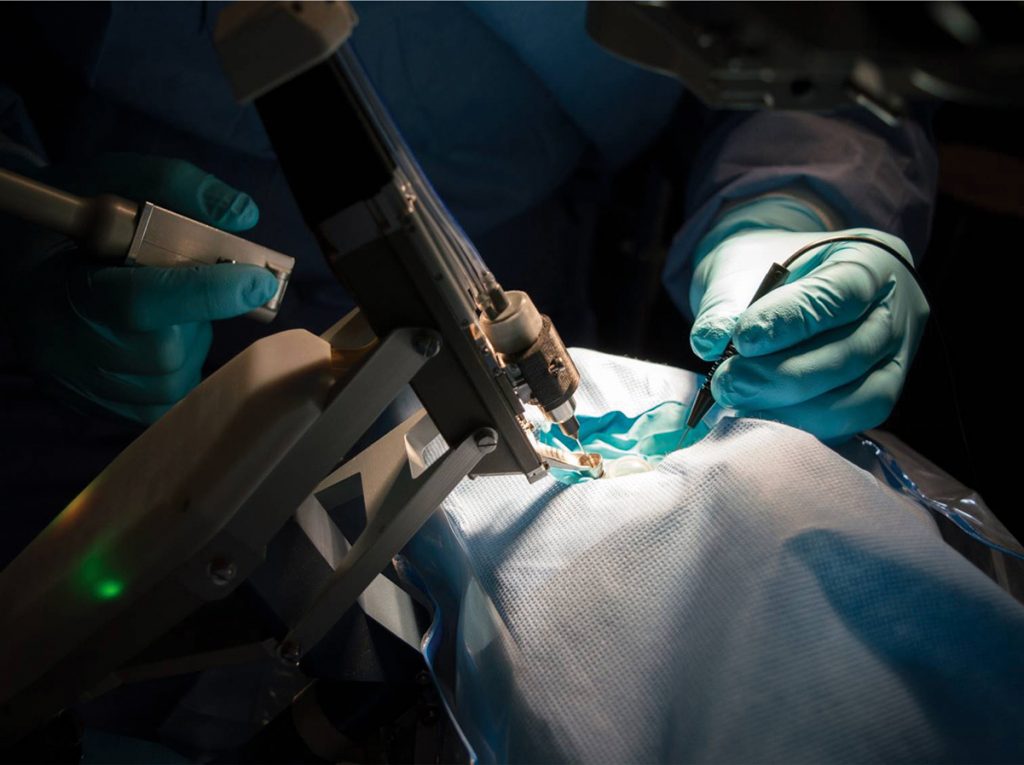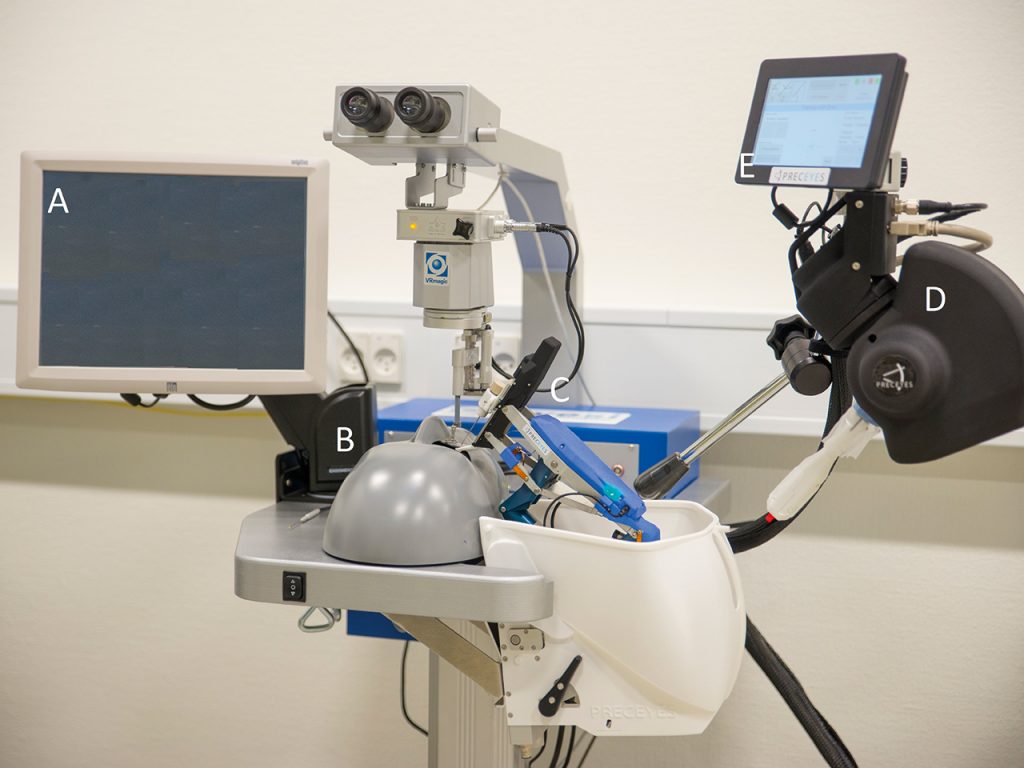Robot-assisted surgery
Robot-assisted vitreoretinal surgery – slower but safer?

Dermot McGrath
Published: Friday, May 1, 2020
 The Preceyes Surgical System: A tele-operated robotically assistive device dedicated to vitreoretinal surgery.
The Preceyes Surgical System: A tele-operated robotically assistive device dedicated to vitreoretinal surgery.Images courtesy of Preceyes BV[/caption]
 Mads Forslund Jacobsen MD
Mads Forslund Jacobsen MD The experimental robot-assisted surgery setup. (A) EyeSi Simulator controls display. (B) EyeSi Simulator phantom head. (C) Robot instrument manipulator. (D) Robot motion controller. (E) Robot controls display[/caption]
The automated metrics of performance supplied by the Eyesi simulator were used as outcome measures and included time with instruments inserted (seconds), instrument movement (mm) and tissue treatment (mm2).
In terms of results, both novices and vitreoretinal surgeons were significantly slower when using robot-assisted surgery as compared to manual surgery. However, the movement outcomes showed that both novices and vitreoretinal surgeons were significantly more precise when performing tasks with less movement of instruments. Novice surgeons were also found to have significantly less tissue damage when using robot-assisted surgery compared to manual surgery, whereas there was no statistically significant difference for experienced VR surgeons.
Mads Forslund Jacobsen: mads.forslund.jacobsen@regionh.dk
The experimental robot-assisted surgery setup. (A) EyeSi Simulator controls display. (B) EyeSi Simulator phantom head. (C) Robot instrument manipulator. (D) Robot motion controller. (E) Robot controls display[/caption]
The automated metrics of performance supplied by the Eyesi simulator were used as outcome measures and included time with instruments inserted (seconds), instrument movement (mm) and tissue treatment (mm2).
In terms of results, both novices and vitreoretinal surgeons were significantly slower when using robot-assisted surgery as compared to manual surgery. However, the movement outcomes showed that both novices and vitreoretinal surgeons were significantly more precise when performing tasks with less movement of instruments. Novice surgeons were also found to have significantly less tissue damage when using robot-assisted surgery compared to manual surgery, whereas there was no statistically significant difference for experienced VR surgeons.
Mads Forslund Jacobsen: mads.forslund.jacobsen@regionh.dk
Tags: robot-assisted surgery, vitreoretinal surgery
Latest Articles
Nutrition and the Eye: A Recipe for Success
A look at the evidence for tasty ways of lowering risks and improving ocular health.
New Award to Encourage Research into Sustainable Practices
Sharing a Vision for the Future
ESCRS leaders update Trieste conference on ESCRS initiatives.
Extending Depth of Satisfaction
The ESCRS Eye Journal Club discuss a new study reviewing the causes and management of dissatisfaction after implantation of an EDOF IOL.
Conventional Versus Laser-Assisted Cataract Surgery
Evidence favours conventional technique in most cases.
AI Scribing and Telephone Management
Automating note-taking and call centres could boost practice efficiency.
AI Analysis and the Cornea
A combination of better imaging and AI deep learning could significantly improve corneal imaging and diagnosis.
Cooking a Feast for the Eyes
A cookbook to promote ocular health through thoughtful and traditional cuisine.
Need to Know: Spherical Aberration
Part three of this series examines spherical aberration and its influence on higher-order aberrations.
Generating AI’s Potential
How generative AI impacts medicine, society, and the environment.